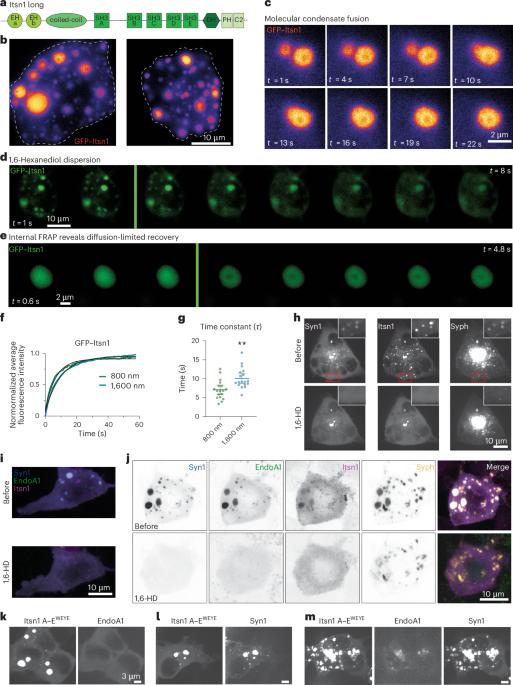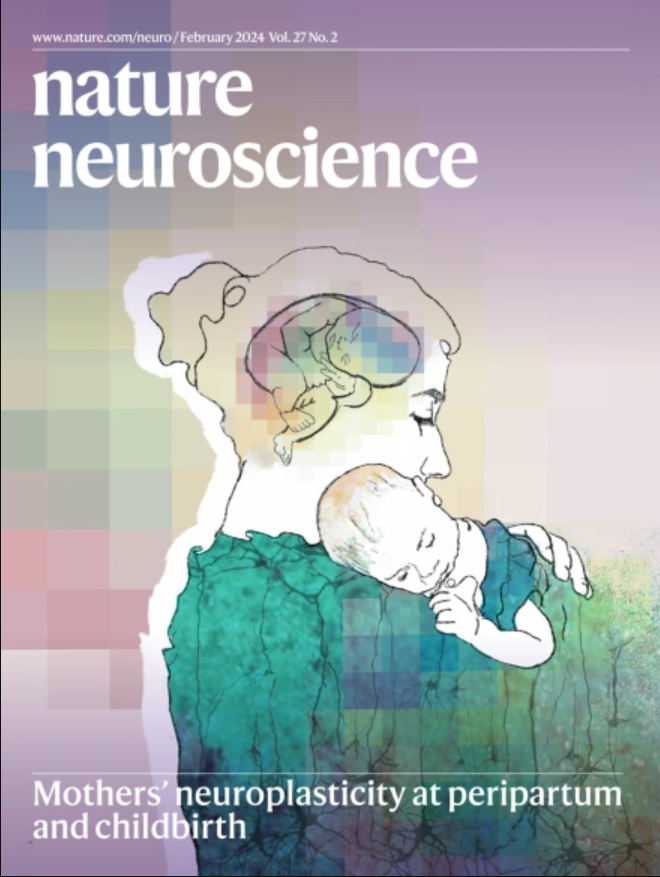Intersectin and endophilin condensates prime synaptic vesicles for release site replenishment
IF 20
1区 医学
Q1 NEUROSCIENCES
引用次数: 0
Abstract
Following synaptic vesicle fusion, vacated release sites are replenished immediately by new vesicles for subsequent neurotransmission. These replacement vesicles are assumed to be located near release sites and used by chance. Here we find in mouse hippocampal excitatory synapses that replacement vesicles are clustered near the active zone where release sites reside by intersectin-1. Specifically, intersectin-1 forms dynamic molecular condensates with endophilin A1 and sequesters vesicles around this region. In the absence of intersectin-1, fewer vesicles cluster within 20 nm of the plasma membrane, and consequently vacated sites cannot be replenished rapidly, leading to synaptic depression. Mutations in intersectin-1 that disrupt endophilin A1 binding result in similar phenotypes. In the absence of endophilin A1, intersectin-1 is mislocalized, and this replacement pool of vesicles cannot be accessed, suggesting that endophilin A1 is needed to mobilize these vesicles. Thus, our work describes the replacement zone within a synapse, where replacement vesicles are stored for replenishment of the release site. Time-resolved electron microscopy reveals that intersectin-1 and endophilin A1 condensates hold replacement synaptic vesicles close to release sites. Without this, replacement vesicles are unavailable for immediate use, causing synaptic depression in response to stimulation trains.


交叉蛋白和亲内蛋白凝聚主要突触囊泡释放位点补充
突触囊泡融合后,空出的释放位点立即被新的囊泡补充,用于随后的神经传递。假定这些替代囊泡位于释放点附近,并且是偶然使用的。在小鼠海马兴奋性突触中,我们发现替代囊泡聚集在交叉蛋白-1释放位点所在的活跃区附近。具体来说,相交素-1与亲内蛋白A1形成动态分子凝聚,并在该区域周围封存囊泡。在缺乏相交素-1的情况下,在质膜20 nm内聚集的囊泡较少,因此空出的位点不能迅速补充,导致突触抑制。破坏亲内蛋白A1结合的交叉蛋白-1突变导致类似的表型。在缺乏亲内蛋白A1的情况下,交叉蛋白1定位错误,囊泡的替代池无法进入,这表明需要亲内蛋白A1来动员这些囊泡。因此,我们的工作描述了突触内的替代区,在那里储存替代囊泡以补充释放位点。
本文章由计算机程序翻译,如有差异,请以英文原文为准。
求助全文
约1分钟内获得全文
求助全文
来源期刊

Nature neuroscience
医学-神经科学
CiteScore
38.60
自引率
1.20%
发文量
212
审稿时长
1 months
期刊介绍:
Nature Neuroscience, a multidisciplinary journal, publishes papers of the utmost quality and significance across all realms of neuroscience. The editors welcome contributions spanning molecular, cellular, systems, and cognitive neuroscience, along with psychophysics, computational modeling, and nervous system disorders. While no area is off-limits, studies offering fundamental insights into nervous system function receive priority.
The journal offers high visibility to both readers and authors, fostering interdisciplinary communication and accessibility to a broad audience. It maintains high standards of copy editing and production, rigorous peer review, rapid publication, and operates independently from academic societies and other vested interests.
In addition to primary research, Nature Neuroscience features news and views, reviews, editorials, commentaries, perspectives, book reviews, and correspondence, aiming to serve as the voice of the global neuroscience community.
 求助内容:
求助内容: 应助结果提醒方式:
应助结果提醒方式:


